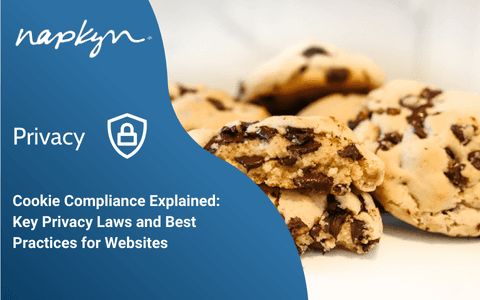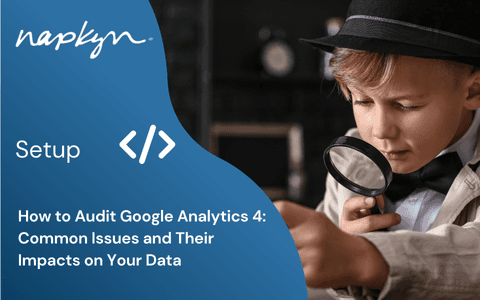

Cookie Compliance Explained: Key Privacy Laws and Best Practices for Websites
With global privacy laws constantly evolving, staying compliant with cookie regulations can feel overwhelming. From GDPR to CCPA and beyond, each law has its nuances, but common patterns emerge. This guide breaks down key aspects of cookie compliance, helping you understand consent types, cookie policies, and data subject rights.

Rob English
Lead Product Specialist
With global privacy laws constantly evolving, staying compliant with cookie regulations can feel overwhelming. From GDPR to CCPA and beyond, each law has its nuances, but common patterns emerge. This guide breaks down key aspects of cookie compliance, helping you understand consent types, cookie policies, and data subject rights.
One effective way to simplify compliance is by looking at regulations from a high-level perspective. While the details vary, privacy laws share common structural elements. Since I primarily deal with tagging, cookie compliance, and web analytics, this post focuses on the compliance aspects relevant to websites. While this isn't a comprehensive legal guide, it highlights critical areas of cookie compliance that align across different regulations.
Understanding Cookie Consent Types
When it comes to consent, privacy regulations typically follow one of two models:
Opt-in (Explicit/Express Consent)
When someone lands on your website, before tracking a visitor, you must first obtain their explicit consent. This is required by regulations such as GDPR (EU) and Law 25 (Quebec).
Opt-out (Implied Consent)
Upon landing on a website, users are tracked by default, but they must be given the option to opt out at any time. Regulations like PIPEDA (Canada) and CCPA (California) allow for this approach.
Cookie Banners: A Compliance Essential
Cookie banners have become a consistent and prominent part (if not the most prominent part) of the cookie compliance landscape. Many privacy policies require a cookie banner to be present on a website, and in many cases have to tie-in consent buttons with it. For example GDPR requires banners to inform users about cookies, and their purposes, as well as give the option to accept/reject tracking, while POPIA (South Africa) recommends that cookie policies be clearly communicated to the end-user but doesn’t explicitly specify what needs to appear in the privacy banner.
And this is a fairly common aspect of many of the more prominent laws. You either need banners with clear language on cookie usage and policies, OR you don’t need a banner BUT you still need to provide clear language on cookie usage and policies. Which leads into the next point.
Privacy Law and Cookie Banner Requirements in North America and EU

In short, you either need a cookie banner with explicit consent options or a clear, transparent cookie policy to comply with regulations.
Cookie Policies: What to Include
A cookie policy will either typically be a dedicated policy page of a website or a part of the existing privacy policy. Information of all of a website's cookies will be documented here, including (but not limited to):
How cookies are used
What data is collected
How the data is processed and shared
User rights related to cookies
While many regulations, like GDPR, POPIA or LGPD stipulate that a dedicated cookie policy is required, other laws may not require one at all (at least in a dedicated format). That said, they’ll likely outline the need to provide transparency in your privacy policy about cookie usage.
Data Subject Access Requests (DSARs): User Rights & Compliance
DSARs apply to all personal data, not just cookies, but they often involve websites since users frequently submit access requests through them.
Common DSAR Rights
Data Subject Access Requests (DSARs) are applicable to all data, not just the cookie compliance portion of privacy. The reason I’ve chosen to include them in this list is often the website (with which I work) is tied to aspects of submitting DSARs. At their core DSARs are usually broken down as:
Right to Access – Users can request a copy of their data.
Right to Correction – Users can request that inaccurate data be fixed.
Right to Deletion – Users can ask for their data to be deleted.
Right to Portability – Users can receive their data in a portable format.
Right to Object – Users can object to data processing.
Right to Restrict Processing – Users can request limits on how their data is used.
How Regulations Handle DSARs

The categorization of DSARs is consistent across regulations, but the implementation details differ.
Data Minimization & Retention: Best Practices
While not an aspect of privacy regulation that is solely focused on cookie compliance, as it applies to all data, this is a critical one when thinking about web analytics tracking:
minimizing the data you collect to what you need,
limiting it’s use, and
retaining it for only as long as you need it.
This is a core component of many (if not all) privacy regulations.
Privacy laws emphasize limiting data collection to what is necessary and storing it only as long as needed.
GDPR has strict rules about data minimization (collecting what you need) and retention (keeping it for only as long as you need it).
Most regulations do not require companies to disclose retention periods—except CCPA/CPRA, which mandates transparency in data retention policies.
Pro Tip:
💡 When in doubt, collect only essential data and define clear retention policies to align with compliance standards.
Cross-Border Data Transfers
Many regulations follow GDPR’s approach to cross-border data transfers:
✅ Adequate safeguards must be in place to protect user data when transferred internationally.
✅ Some laws focus more on accountability and transparency rather than strict parity with domestic standards.
If your website processes international user data, ensure that:
Data transfer agreements (e.g., Standard Contractual Clauses) are in place.
You comply with local data protection authorities' guidelines on international transfers.
Conclusion & Next Steps
Privacy isn’t a passing trend—it’s a business necessity. The risks of non-compliance, including financial penalties and reputational damage, are too high to ignore.
Now more than ever it's important that as data professionals we respect these regulations, and our customers' rights to their privacy in accordance with these laws. The cost of non-compliance both financially and reputationally speaking is just too high. As customers are becoming more educated of their privacy rights, and many significant data breaches of customer data have occurred over time, privacy is and will continue to be an important aspect of our job. As analysts and implementation specialists, we don’t necessarily need to know every aspect of every one of these regulations, but having that general overview of roughly what each regulation covers and how they align across regulations can be helpful and important. In closing, just a few helpful tips as well, when navigating cookie compliance, and data privacy in general:
How to Stay Compliant:
✅ Audit your cookie policies – Are they transparent and up to date? When in doubt, err on the side of caution
✅ Use a Consent Management Platform (CMP) – These help with cookie compliance, DSARs, and privacy integrations across your business.
✅ Consult legal and privacy experts – If you don’t have in-house resources, seek external guidance.
As analysts and implementation specialists, we don’t need to memorize every regulation, but understanding their core principles helps ensure compliance. By following best practices, we can navigate the evolving privacy landscape responsibly.
FAQ: Quick Compliance Answers
Q: Does my website need a cookie banner?
A: It depends. GDPR requires explicit consent, while CCPA allows implied consent with opt-out options.
Q: How often should I update my cookie policy?
A: At least once a year or whenever privacy laws change.
Q: What is the best way to handle DSARs?
A: Use automated DSAR request tools or a privacy management platform to streamline compliance.
Final Takeaway
By proactively addressing cookie compliance, businesses can enhance user trust, avoid legal risks, and maintain ethical data practices. Stay informed, use the right tools, and prioritize transparency to navigate evolving regulations successfully.
🚀 Need help optimizing your privacy compliance strategy? Contact Napkyn for a Digital Privacy Assessment
An assessment of your website’s status for the provisions of key privacy legislation, evaluating:
Its privacy and consent management features
Your privacy policy
Your tag management and technical analytics implementation
Personal information/PII in your data & reporting
More Insights


How to Audit Google Analytics 4 (GA4): Common Issues and Their Impacts on Your Data

Hasan Alanam
Manager, Data Solutions
Apr 7, 2025
Read More


How to move a GA4 property from one Google Analytics account to another

Trisha Patel
Senior Analyst, Data Solutions
Apr 2, 2025
Read More
More Insights
Sign Up For Our Newsletter

Napkyn Inc.
204-78 George Street, Ottawa, Ontario, K1N 5W1, Canada
Napkyn US
6 East 32nd Street, 9th Floor, New York, NY 10016, USA
212-247-0800 | info@napkyn.com

Cookie Compliance Explained: Key Privacy Laws and Best Practices for Websites
With global privacy laws constantly evolving, staying compliant with cookie regulations can feel overwhelming. From GDPR to CCPA and beyond, each law has its nuances, but common patterns emerge. This guide breaks down key aspects of cookie compliance, helping you understand consent types, cookie policies, and data subject rights.

Rob English
Lead Product Specialist
With global privacy laws constantly evolving, staying compliant with cookie regulations can feel overwhelming. From GDPR to CCPA and beyond, each law has its nuances, but common patterns emerge. This guide breaks down key aspects of cookie compliance, helping you understand consent types, cookie policies, and data subject rights.
One effective way to simplify compliance is by looking at regulations from a high-level perspective. While the details vary, privacy laws share common structural elements. Since I primarily deal with tagging, cookie compliance, and web analytics, this post focuses on the compliance aspects relevant to websites. While this isn't a comprehensive legal guide, it highlights critical areas of cookie compliance that align across different regulations.
Understanding Cookie Consent Types
When it comes to consent, privacy regulations typically follow one of two models:
Opt-in (Explicit/Express Consent)
When someone lands on your website, before tracking a visitor, you must first obtain their explicit consent. This is required by regulations such as GDPR (EU) and Law 25 (Quebec).
Opt-out (Implied Consent)
Upon landing on a website, users are tracked by default, but they must be given the option to opt out at any time. Regulations like PIPEDA (Canada) and CCPA (California) allow for this approach.
Cookie Banners: A Compliance Essential
Cookie banners have become a consistent and prominent part (if not the most prominent part) of the cookie compliance landscape. Many privacy policies require a cookie banner to be present on a website, and in many cases have to tie-in consent buttons with it. For example GDPR requires banners to inform users about cookies, and their purposes, as well as give the option to accept/reject tracking, while POPIA (South Africa) recommends that cookie policies be clearly communicated to the end-user but doesn’t explicitly specify what needs to appear in the privacy banner.
And this is a fairly common aspect of many of the more prominent laws. You either need banners with clear language on cookie usage and policies, OR you don’t need a banner BUT you still need to provide clear language on cookie usage and policies. Which leads into the next point.
Privacy Law and Cookie Banner Requirements in North America and EU

In short, you either need a cookie banner with explicit consent options or a clear, transparent cookie policy to comply with regulations.
Cookie Policies: What to Include
A cookie policy will either typically be a dedicated policy page of a website or a part of the existing privacy policy. Information of all of a website's cookies will be documented here, including (but not limited to):
How cookies are used
What data is collected
How the data is processed and shared
User rights related to cookies
While many regulations, like GDPR, POPIA or LGPD stipulate that a dedicated cookie policy is required, other laws may not require one at all (at least in a dedicated format). That said, they’ll likely outline the need to provide transparency in your privacy policy about cookie usage.
Data Subject Access Requests (DSARs): User Rights & Compliance
DSARs apply to all personal data, not just cookies, but they often involve websites since users frequently submit access requests through them.
Common DSAR Rights
Data Subject Access Requests (DSARs) are applicable to all data, not just the cookie compliance portion of privacy. The reason I’ve chosen to include them in this list is often the website (with which I work) is tied to aspects of submitting DSARs. At their core DSARs are usually broken down as:
Right to Access – Users can request a copy of their data.
Right to Correction – Users can request that inaccurate data be fixed.
Right to Deletion – Users can ask for their data to be deleted.
Right to Portability – Users can receive their data in a portable format.
Right to Object – Users can object to data processing.
Right to Restrict Processing – Users can request limits on how their data is used.
How Regulations Handle DSARs

The categorization of DSARs is consistent across regulations, but the implementation details differ.
Data Minimization & Retention: Best Practices
While not an aspect of privacy regulation that is solely focused on cookie compliance, as it applies to all data, this is a critical one when thinking about web analytics tracking:
minimizing the data you collect to what you need,
limiting it’s use, and
retaining it for only as long as you need it.
This is a core component of many (if not all) privacy regulations.
Privacy laws emphasize limiting data collection to what is necessary and storing it only as long as needed.
GDPR has strict rules about data minimization (collecting what you need) and retention (keeping it for only as long as you need it).
Most regulations do not require companies to disclose retention periods—except CCPA/CPRA, which mandates transparency in data retention policies.
Pro Tip:
💡 When in doubt, collect only essential data and define clear retention policies to align with compliance standards.
Cross-Border Data Transfers
Many regulations follow GDPR’s approach to cross-border data transfers:
✅ Adequate safeguards must be in place to protect user data when transferred internationally.
✅ Some laws focus more on accountability and transparency rather than strict parity with domestic standards.
If your website processes international user data, ensure that:
Data transfer agreements (e.g., Standard Contractual Clauses) are in place.
You comply with local data protection authorities' guidelines on international transfers.
Conclusion & Next Steps
Privacy isn’t a passing trend—it’s a business necessity. The risks of non-compliance, including financial penalties and reputational damage, are too high to ignore.
Now more than ever it's important that as data professionals we respect these regulations, and our customers' rights to their privacy in accordance with these laws. The cost of non-compliance both financially and reputationally speaking is just too high. As customers are becoming more educated of their privacy rights, and many significant data breaches of customer data have occurred over time, privacy is and will continue to be an important aspect of our job. As analysts and implementation specialists, we don’t necessarily need to know every aspect of every one of these regulations, but having that general overview of roughly what each regulation covers and how they align across regulations can be helpful and important. In closing, just a few helpful tips as well, when navigating cookie compliance, and data privacy in general:
How to Stay Compliant:
✅ Audit your cookie policies – Are they transparent and up to date? When in doubt, err on the side of caution
✅ Use a Consent Management Platform (CMP) – These help with cookie compliance, DSARs, and privacy integrations across your business.
✅ Consult legal and privacy experts – If you don’t have in-house resources, seek external guidance.
As analysts and implementation specialists, we don’t need to memorize every regulation, but understanding their core principles helps ensure compliance. By following best practices, we can navigate the evolving privacy landscape responsibly.
FAQ: Quick Compliance Answers
Q: Does my website need a cookie banner?
A: It depends. GDPR requires explicit consent, while CCPA allows implied consent with opt-out options.
Q: How often should I update my cookie policy?
A: At least once a year or whenever privacy laws change.
Q: What is the best way to handle DSARs?
A: Use automated DSAR request tools or a privacy management platform to streamline compliance.
Final Takeaway
By proactively addressing cookie compliance, businesses can enhance user trust, avoid legal risks, and maintain ethical data practices. Stay informed, use the right tools, and prioritize transparency to navigate evolving regulations successfully.
🚀 Need help optimizing your privacy compliance strategy? Contact Napkyn for a Digital Privacy Assessment
An assessment of your website’s status for the provisions of key privacy legislation, evaluating:
Its privacy and consent management features
Your privacy policy
Your tag management and technical analytics implementation
Personal information/PII in your data & reporting
More Insights

How to Set Up GA4 Ecommerce Tracking (Without Data Loss) | A Complete Step-by-Step Guide

Ricardo Cristofolini
Senior Implementation Specialist, Data Solutions
Apr 16, 2025
Read More

Integrating Google Analytics, Salesforce, and Google Ads for Marketing Superpowers

Monika Boldak
Associate Director, Marketing
Apr 9, 2025
Read More

How to Audit Google Analytics 4 (GA4): Common Issues and Their Impacts on Your Data

Hasan Alanam
Manager, Data Solutions
Apr 7, 2025
Read More
More Insights
Sign Up For Our Newsletter


